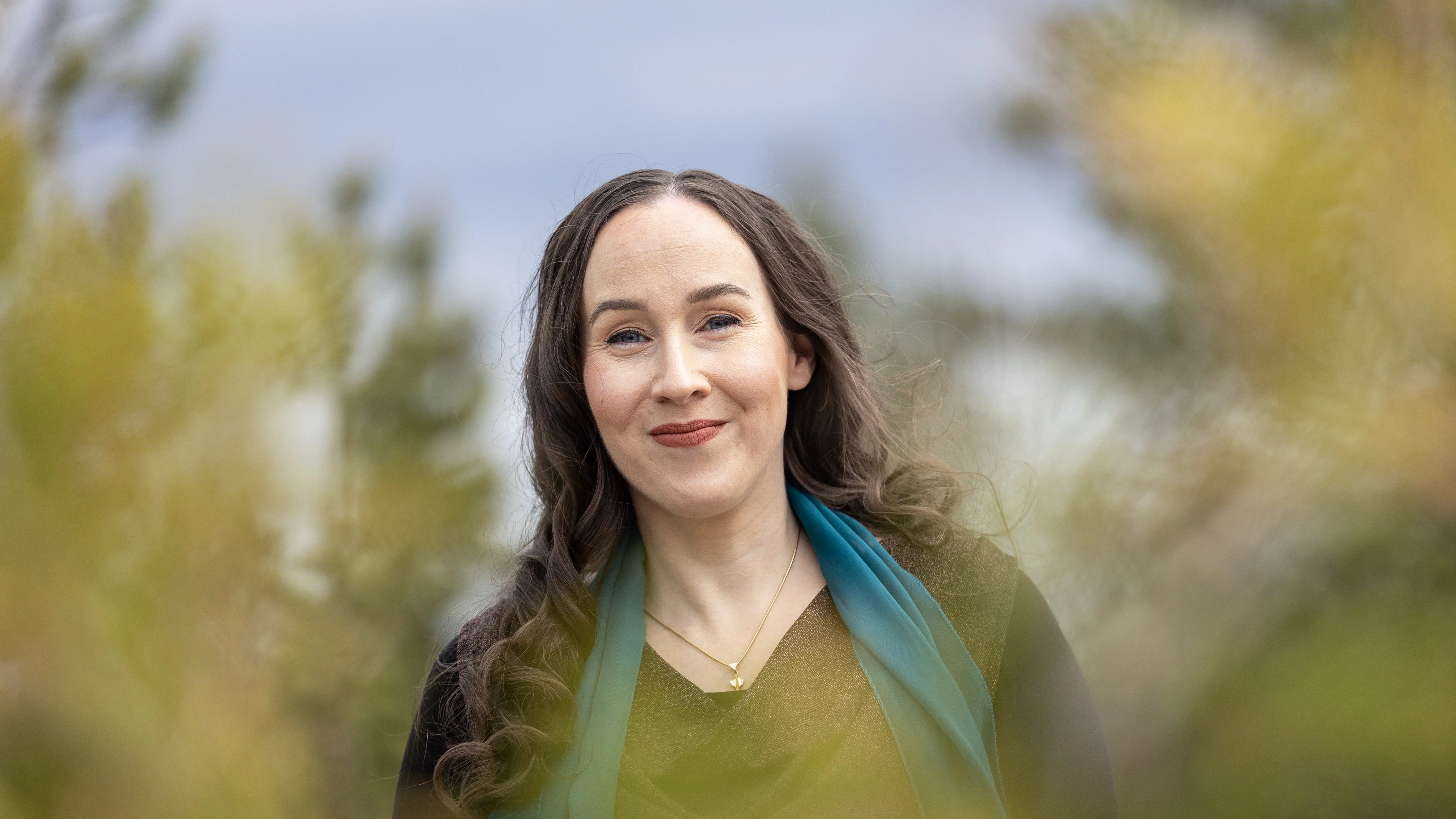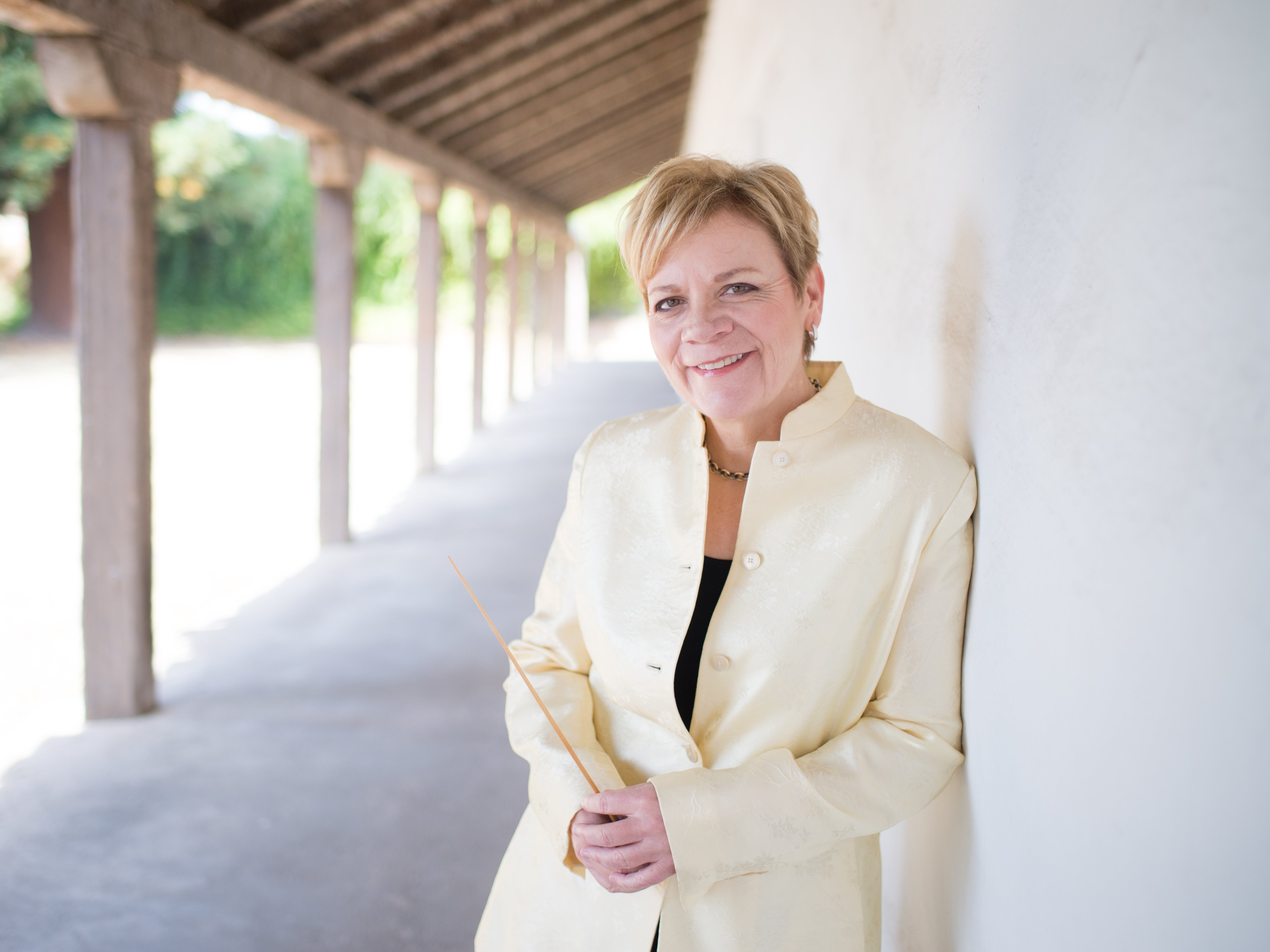
Her spectral, evocative sounds have a seductive pull. In her works, Finnish composer Outi Tarkiainen deals with nature and the threats it faces in a gentle but haunting way. At the Paradise lost? biennial, the Berliner Philharmoniker will present the world premiere of her new work Day Night Day. In this inverview, Outi Tarkiainen talks about why she became a composer and how nature and the traditions of the Sámi, the indigenous people of Finland inform her music.
How and when did you discover that you were a composer?
Composing has been part of me since early childhood. There was a piano in my childhood home’s living room from the time I was four years old, and I loved to improvise on it – I learned to write notes before writing letters. I also composed without piano, and went for walks in the small forest next to our house – coming back with a song.
Since Sibelius, there is an assumption that Finnish composers incorporate nature much more strongly into their music than composers from other countries. How do you see this?
In Finland (and the Nordic countries in general), nature is much more present and closer to people than it generally is in central Europe. The agricultural times, when people were dependent on the weather and natural conditions, are not very far in the past. And in Lapland, where I’m from and where I live, we have many reindeer herders, who still carry all the ancient wisdom of the signs of nature, which are now threatened by climate change.
Your new work, which will be premiered by the Berliner Philharmoniker, is called Day Night Day. How did you come up with the idea for this piece?
The idea for this piece came through the working process of my forthcoming Sámi opera Day of Night, jointly commissioned by Aalto Musiktheater Essen and Finnish National Opera and Ballet. The opera is about vast contrasts and contradictions – just like life in the Arctic. Each act of the opera begins with an orchestral prelude, where the season changes – in Sápmi they have eight seasons (winter, spring-winter, spring, early summer, summer, late summer, autumn, atumn-winter, editor's note). In this piece we hear early winter and early summersummer, so the change from darkness to light.
The title sounds like a composition full of musical contrasts. What do day and night look like for you?
The day and night are very flexible concepts at my home in the Arctic Circle and above. In the summer the nights are luminous; and on the other hand, in mid-winter, the brightest moment of the day is gloaming. In the opera there’s this sentence: ”Darkness too has a purpose: it is a protection, a place where you rest, grow and dream.” I think that’s very true, as the continuous light can be not only energising, but also, in the end, exhausting. But the huge contrasts make very clear frames for life.
You use a joik, an old Sami song, in the piece. What is the song about and what makes it so appealing to you as a composer?
The work incorporates references to two Sámi melodies: a yoik of Sámi woman by her Sámi name Láve Nigá Risten. She came from a village on the River Deatnu, the border river between Norway and Finland. The yoik is of her (not made by her but of her). I searched for a certain type of yoik to characterize the protagonist of my opera musically, and Láve Nigá Risten’s yoik had all the qualities that I searched for – it has the utmost beauty, it is a bit melancholic, and it has feminine power. We hear it heralded by muted trumpets towards the beginning of the work.
The other Sámi song in this work is a variation of the old South Sámi lullaby Sjamma, sjamma hummed at the end by the woodwinds. It's a timeless, very simple and beautiful lullaby for a child in a cradle
When you hear the piece played by an orchestra for the first time, what are you particularly curious about?
In the orchestra rehearsals, probably the most fascinating moment is when the musicians begin to understand the music and what’s behind it. It’s a moment when it no longer sounds as if they’re reading music, but rather as if they are expressing it, and at best it feels like flying. Of course as a composer I’m curious to hear how the things that I have only imagined actually sound; usually there are still some smaller or bigger things, typically some balancing, that has to be fixed. Yet the the world premiere is the moment when the composition is actually born. That’s an irreplaceable moment, when you can sense how the audience reacts to the work. After all, composers can never hear their own works for the first time the way that the audience does!
What should our audience pay particular attention to when listening to Day Night Day?
I suggest just sitting back and enjoying the journey! I encourage everyone to let their imagination lead their experience, wherever it takes them.

Biennale: “Paradise Lost?”
In February 2025, the Berliner Philharmoniker’s Biennale will focus on the threat to nature. A festival with concerts, guests from the world of science and much more.

Nature and music
Composers of all ages have been inspired by nature to write magnificent works: only their aesthetic outlook and their individual approach have changed with the passage of time. Here is a brief survey of this subject

“Is what we’re doing enough?”
Marin Alsop, making her debut with the Berliner Philharmoniker, will present four depictions of nature from four different continents at the Biennale “Paradise lost?”.